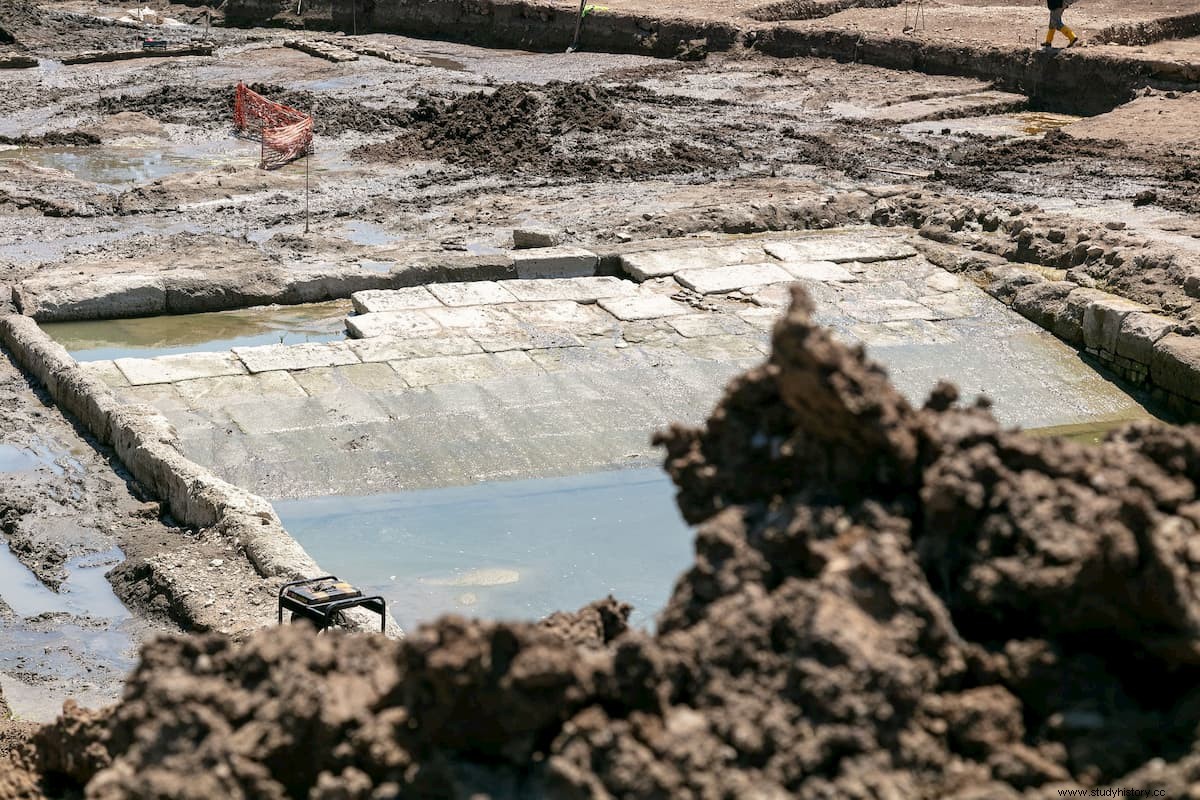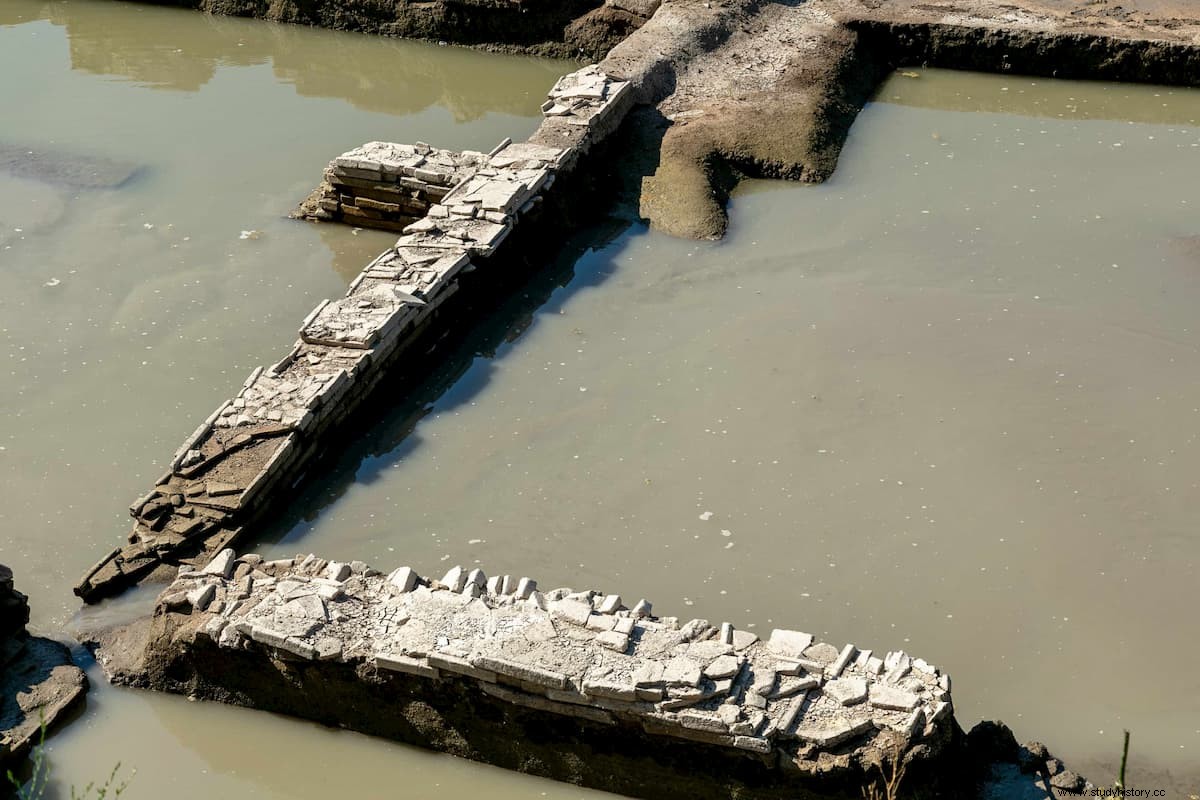A monumental swimming pool over 40 meters long dating from the 4th century BC, was found in Rome, at the crossroads between Via Ostiense and Via di Malafede.
The discovery was made thanks to preventive archeology research conducted by the Soprintendenza Speciale di Roma . Remains of other buildings and constructions were also discovered in the area, covering an area of about 2 hectares of land, with findings that extend chronologically over 8 centuries.

Special Superintendent Daniela Porro explained:This is a discovery that renews the wonder of Rome and the endless stories it has yet to tell. Facing such a discovery has also left our archaeologists shocked. It is a rich and complex context, a testimony to how much Rome, even outside its urban limits, still has much to give and reveal to its inhabitants. Another success of preventive archaeology, essential not to disperse our past and to protect and improve territories that would otherwise remain unexplored .
According to Barbara Rossi, head of archaeological research at the Special Superintendence of Rome, the excavation tells us about an important place that has been alive for more than eight centuries, as evidenced by the quantity and above all the quality of the buildings found. , as well as the monumental pool from the 4th century BC, found in all its breadth. The study of the large number of materials that this research has returned to us and continues to return to us – wood, terracotta, metal objects, inscriptions – will reveal the secrets of this extraordinary corner of the territory of Rome .

The area includes the Malafede trench, inhabited since prehistory and for centuries navigable inland. With excavations still ongoing, what has emerged to date is the articulated stratification of buildings and constructions from the 5th century B.C. until 3rd AD, in which there are the remains of tuff blocks of a large building, fragments of painted terracotta, such as a winged victory holding a crown and a small sacellum with an internal altar, a porch and an aqueduct.
But it is the great monumental pool from the 4th century BC. more than 40 meters long, 12 meters wide and almost two meters deep, equipped with retaining walls of tuff and a ramp, the great protagonist of the excavations.

The function of this monumental unpaved construction is still being studied, which is supposed to have been part of a water exploitation system and could have been a kind of settling tank.
Fragments of wood, one inscribed in the Etruscan alphabet, and long beams appeared in the muddy bed of the pool. It will take time to verify the thesis that it is a probable storage place for ships, although we have not found any canal and we cannot excavate more, being right next to the Via Ostiense , according to Barbara Rossi.

